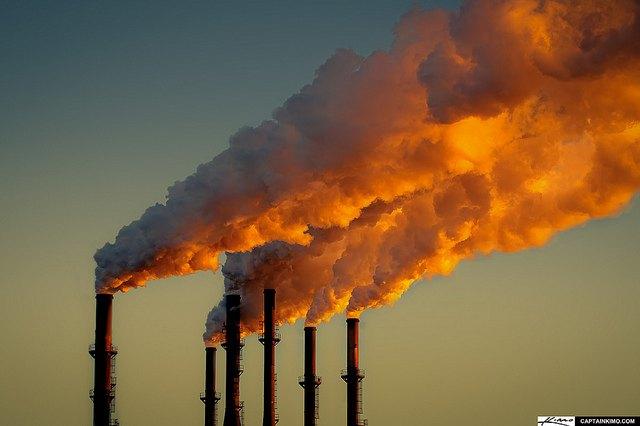
The House Committee on Natural Resources recently discussed the benefits that carbon emissions provide to the planet. Yes, you heard right, I said “benefits.” Greenhouse gases produced by burning coal, oil and other fuels are good, so some representatives and witnesses say. Shocking, I know.
Read the three arguments below if you want a good laugh.
1. No costs, only benefits, to burning carbon dioxide
Most environmentalists support taxing carbon emissions, which reduces these emissions and stimulates the economy. However, Kevin Dayaratna, the senior statistician and research programmer for the Center for Data Analysis at the Heritage Foundation, says: “There are literally no costs, but benefits, to burning carbon dioxide.” Therefore, the government should “subsidize, not tax, carbon dioxide emissions.”
How did he arrive at this, ahem, unusual conclusion? He looked at the Social Cost of Carbon (SCC), a metric that calculates how much damage a ton of carbon dioxide wreaks on society, and increased the social discount rate used to calculate the SCC. What is a social discount rate? The discount rate states how much we should invest today to prevent future damage. High discount rates underestimate how much stopping climate change now is worth.
The typical rate used is 3 percent, but Dayaratna used 7 percent, more than double the typical amount.
2. Carbon helps plants grow -- so the more we produce, the better
The director of the Cato Institute’s Center for the Study of Science, Patrick Michaels, said there are “thousands of scientific studies that point to the direct fertilization effect shown by an increase in carbon to agriculture.”
Really? Is that true? A little. Some crops do produce more for a time. But what Michaels not so accidentally failed to mention is that carbon increases damage other plants.
Climate Central states: “Plants do need CO2, but they also need water, nitrogen and other nutrients. Increase one of these without increasing the others and there’s a limit to how much the plants will benefit. Some do not grow much more at all. Others, like wheat, grow bigger but end up with less nitrogen. As a result, insects end up eating more to get the nitrogen they need. The nutritional value of food plants would be similarly reduced for other animals — including humans. Also, we could end up with vegetables that have too much carbon — perhaps producing spinach that would be very tough to chew!”
This is without even considering the fact that global warming is wreaking havoc on other crops due to higher temperature, severe droughts, stronger storms and flooding.
3. Cold weather brings the bubonic plague, warm weather brings cathedrals
“Fossil fuels have dramatically improved the lives of human beings,” Rep. Jeff Duncan (R-S.C.) said. “Man does better when it’s warmer. It got colder; we had the Bubonic plague. [Fossil fuels] ought to be the standard.”
Well now, at last we have a logical argument -- cold weather brings the Bubonic plague. Except that a study by the Proceedings of the National Academy of Sciences actually says the opposite. It says that it was warmer temperatures (not colder) in Pakistan that may have caused the spread of the plagues in European harbors.
Duncan cited another reason warmer weather is better. “Between 900 and 1300, the earth was a lot warmer than it is today. Man did so well we saw this Renaissance, where cathedrals were built and there was art and man did not have to struggle to survive as much as they do when it’s colder.”
The underlying assumption here is that the warmer the earth gets, the better. During the warm period that Duncan references, the earth was between 3.6 degrees and 4.5 degrees cooler than it has been for the past 25 years. It’s now significantly warmer now than it was during their warm period.
Also, the warm period mentioned is thought to have ended around 1220 A.D., but the Renaissance peaked at the end of the 1400s. My question is: When global warming causes the waters to rise so high that they flood cathedrals like St. Mark's Basilica in Venice, Italy, will Duncan finally decide global warming is bad?
Image credit: Kim Seng via Flickr

Renee is a social impact strategist who works with companies to help them focus on key social and environmental opportunities. She loves connecting with people so feel free to contact her at renee.a.farris@gmail.com.














